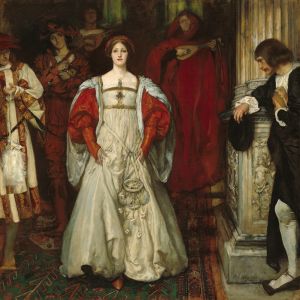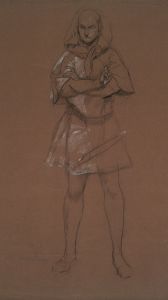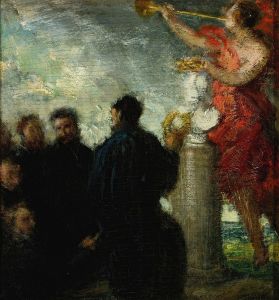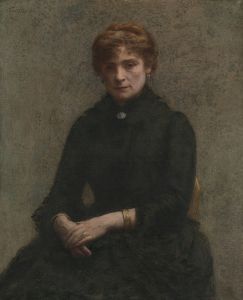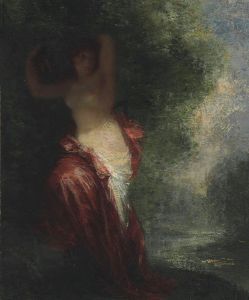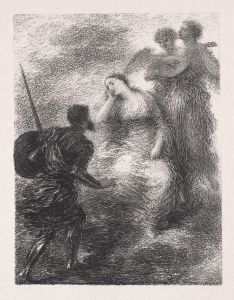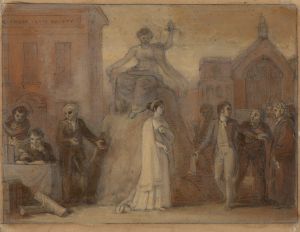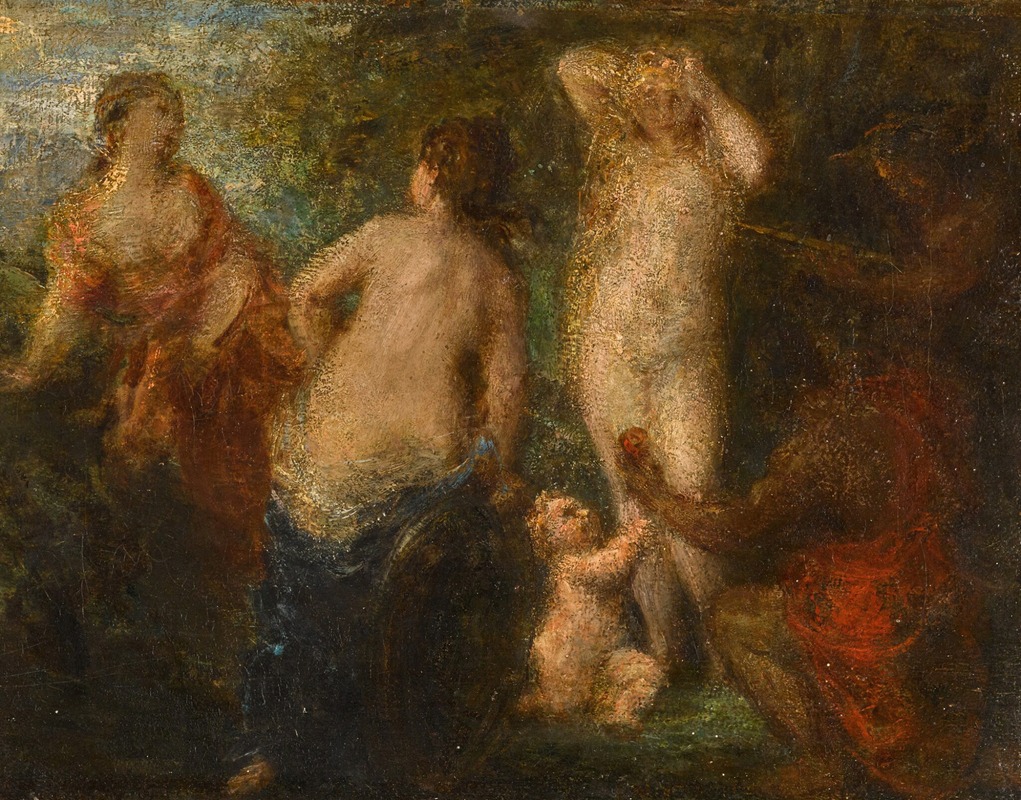
Jugement de Pâris
A hand-painted replica of Henri Fantin-Latour’s masterpiece Jugement de Pâris, meticulously crafted by professional artists to capture the true essence of the original. Each piece is created with museum-quality canvas and rare mineral pigments, carefully painted by experienced artists with delicate brushstrokes and rich, layered colors to perfectly recreate the texture of the original artwork. Unlike machine-printed reproductions, this hand-painted version brings the painting to life, infused with the artist’s emotions and skill in every stroke. Whether for personal collection or home decoration, it instantly elevates the artistic atmosphere of any space.
Henri Fantin-Latour, a renowned French painter known for his still lifes and group portraits, created "Jugement de Pâris" (The Judgment of Paris) in 1902. This artwork is a part of his exploration into mythological themes, which he often depicted with a unique blend of realism and symbolism. Fantin-Latour's approach to classical subjects was influenced by his admiration for the Old Masters and his contemporaries, as well as his interest in music and literature.
"The Judgment of Paris" is based on the famous Greek mythological story that tells of a beauty contest between the goddesses Hera, Athena, and Aphrodite. According to the myth, Paris, a Trojan prince, was chosen to determine which of the three goddesses was the fairest. Each goddess attempted to bribe Paris with powerful gifts: Hera offered power, Athena promised wisdom, and Aphrodite tempted him with the love of the most beautiful mortal woman, Helen of Sparta. Paris ultimately awarded the golden apple to Aphrodite, an act that led to the events of the Trojan War.
Fantin-Latour's interpretation of this myth is characterized by his distinctive style, which combines elements of realism with a dreamlike quality. His use of soft lighting and delicate brushwork creates an ethereal atmosphere, inviting viewers to engage with the narrative on a more intimate level. Unlike some of his contemporaries who might have chosen to depict the dramatic climax of the story, Fantin-Latour's rendition is more subdued, focusing on the serene and contemplative aspects of the scene.
The composition of "Jugement de Pâris" reflects Fantin-Latour's skill in arranging figures harmoniously within the canvas. The three goddesses are depicted with grace and elegance, each embodying their respective attributes. Paris is portrayed as a youthful figure, his expression thoughtful as he contemplates his decision. The background is kept relatively simple, allowing the figures to stand out and emphasizing the timeless nature of the myth.
Fantin-Latour's work often reflects his fascination with the interplay between reality and imagination, and "Jugement de Pâris" is no exception. The painting can be seen as a meditation on choice and consequence, themes that resonate beyond the confines of mythology. His ability to convey complex narratives through subtle visual cues is a testament to his mastery as an artist.
While Fantin-Latour is primarily celebrated for his still lifes and portraits, his mythological paintings, including "Jugement de Pâris," contribute to his legacy as a versatile and imaginative artist. This painting, like many of his works, demonstrates his commitment to exploring the depths of human experience through art. Despite not being as widely known as some of his other pieces, "Jugement de Pâris" remains an important part of Fantin-Latour's oeuvre, showcasing his ability to breathe new life into classical stories through his unique artistic vision.






